
Do you have a question about the Toshiba 24PS10E and is the answer not in the manual?
Essential instructions and precautions for safe TV usage.
Guidelines for securely attaching the TV to prevent injury.
Safety guidelines covering electrical connections, placement, and ventilation.
Covers environmental hazards, moving precautions, and proper use.
Instructions regarding repairs, power cord safety, and lightning.
Procedures for cleaning the TV cabinet and LCD screen.
Information on screen care, pixels, interference, and afterimages.
Guidance on connecting an aerial for optimal reception.
Overview of the TV's features and initial setup.
Instructions for inserting batteries into the remote control.
Identifies and explains controls on the TV's front and side panels.
Details input and output terminals on the TV's back panel.
Explains functions of buttons on the TV's left side panel.
Identifies and describes functions of all remote control buttons.
Instructions for powering the TV on and switching to standby.
Guides through initial setup, language selection, and channel tuning.
Accessing and using the Quick Menu for fast settings access.
Explains how to navigate and use the TV's main menu system.
Visual guide to the TV's menu structure and options.
Selecting languages and adjusting TV positions.
Method for quickly switching between two recently viewed channels.
How to show current TV status and input information.
Steps for auto and manual tuning to store channels.
Automatic channel scanning and preset process.
Manual adjustment of channel positions, systems, and labels.
Choosing between Home and Store modes for optimal TV settings.
Reordering programme positions for easier channel selection.
Switching between different input sources like TV, HDMI, PC.
Accessing and navigating the list of available TV channels.
Overview of picture adjustment features available on the TV.
Options to adjust the aspect ratio of the displayed image.
Non-scaling display mode for PC input, showing native pixels.
Function to freeze the TV picture temporarily.
Adjusting the horizontal and vertical position of the picture.
Selecting preset picture modes like Dynamic, Movie, Game.
Customizing picture settings like brightness, contrast, and colour.
Adjusting black and white levels to improve picture contrast.
Enhancing movie viewing with frame rate conversion.
Adjusting the colour tint (warmth/coolness) of the picture.
Reducing picture noise for a clearer image.
Adjusting individual colour components (Red, Green, Blue, etc.).
Optimizing screen brightness based on ambient light.
Automatically adjusting backlight levels to ambient light.
Overview of sound adjustment features.
Selecting stereo, mono, or bilingual sound modes.
Choosing specific audio channels for bilingual broadcasts.
How to select stereo or monaural sound for programmes.
How to select sound for bilingual broadcasts (NICAM/German).
Adjusting for monaural sound to mitigate distortion.
Adjusting bass, treble, and balance for desired sound output.
Configuring Bass Boost and Voice Enhancement for better audio.
Limiting volume changes to prevent sudden shifts.
Controlling audio compression for digital signals.
Configuring the digital audio output format (Auto/PCM).
Overview of additional TV features and settings.
Setting timers for automatic TV on/off functions.
Automatically adjusting picture format for HDMI input.
Enabling blue screen and muted sound when no signal.
Enabling automatic TV turn-off after inactivity.
Disabling TV buttons to prevent accidental changes.
Stretching 4:3 content to fill the screen.
Adjusting side panel brightness for specific aspect ratios.
Accessing and using the Teletext service.
Selecting Teletext language and viewing mode (Auto/List).
Using the TEXT button for Teletext functions.
Turning subtitles on or off for programmes.
Navigating Teletext pages using Auto mode and FASTEXT.
Accessing and managing favourite Teletext pages.
Functions of specific Teletext buttons on the remote.
Revealing hidden text on Teletext pages.
Holding a specific Teletext page on screen.
Adjusting the size of Teletext display.
Selecting Teletext pages while watching TV.
Displaying the broadcast time.
Diagram and explanation of TV back panel connection ports.
How to use component video input terminals for best picture.
How to use standard video input terminals.
Connecting TV to external audio system for enhanced sound.
Connecting to amplifier for Dolby Digital sound output.
Connecting to amplifier via digital optical audio input.
Connecting HDMI or DVI sources for digital video and audio.
How to connect an HDMI device using an HDMI cable.
Connecting a DVI device using an adapter cable.
Choosing PC or HDMI audio input for PC/HDMI 1.
Selecting audio mode (Auto, Digital, Analogue) for HDMI 1.
Connecting computer via RGB/PC or HDMI terminals.
Pin assignment details for the RGB/PC terminal.
Adjusting picture and clock settings for PC input.
Fine-tuning the picture position for PC input.
Adjusting clock phase for clearer PC picture.
Adjusting sampling clock for optimal PC picture quality.
Restoring PC settings to factory defaults.
Enjoying movie, music, and photo files from a USB device.
Setting Media Player to auto-start with USB insertion.
Manually starting Media Player from the menu.
Navigating and selecting files within Media Player.
Exiting the Media Player application.
Photo viewing modes (Multi View, Single View, Slide Show).
Choosing subtitle and audio languages for media playback.
Setting repeat playback modes for media files.
Registering TV for DivX Video-On-Demand services.
Deactivating the TV from a DivX account.
Playing movie files from a USB device.
Setting repeat playback modes for movie files.
Listening to music files from a USB device.
Exiting the movie playback interface.
Exiting the music playback interface.
Appendix containing supplementary information.
Supported media file formats, codecs, and compatibility notes.
Continuation of supported media file formats and codecs.
Solutions for common TV problems like no picture, no sound, or poor reception.
Explains pixel issues, brightness variation, multiple images, and colour problems.
Troubleshooting steps if the remote control is not working.
Details on broadcast transmission systems by country and region.
TV specs: model, power, dimensions, pixels, audio, speakers, terminals.
Detailed list and description of all input/output terminals.
Recommended operating conditions and list of supplied accessories.
Information on trademarks like HDMI, Dolby, and DivX.
Details on patent portfolio licenses for AVC, VC-1, and MPEG-4.
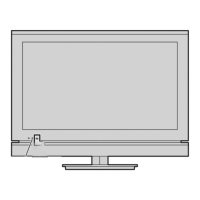


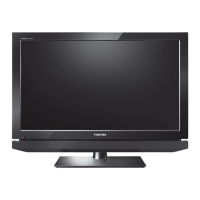
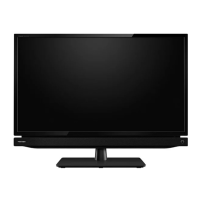
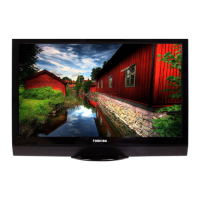


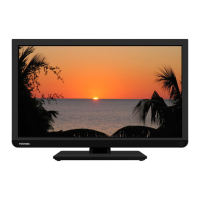

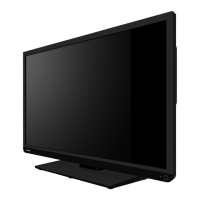
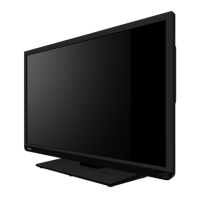
